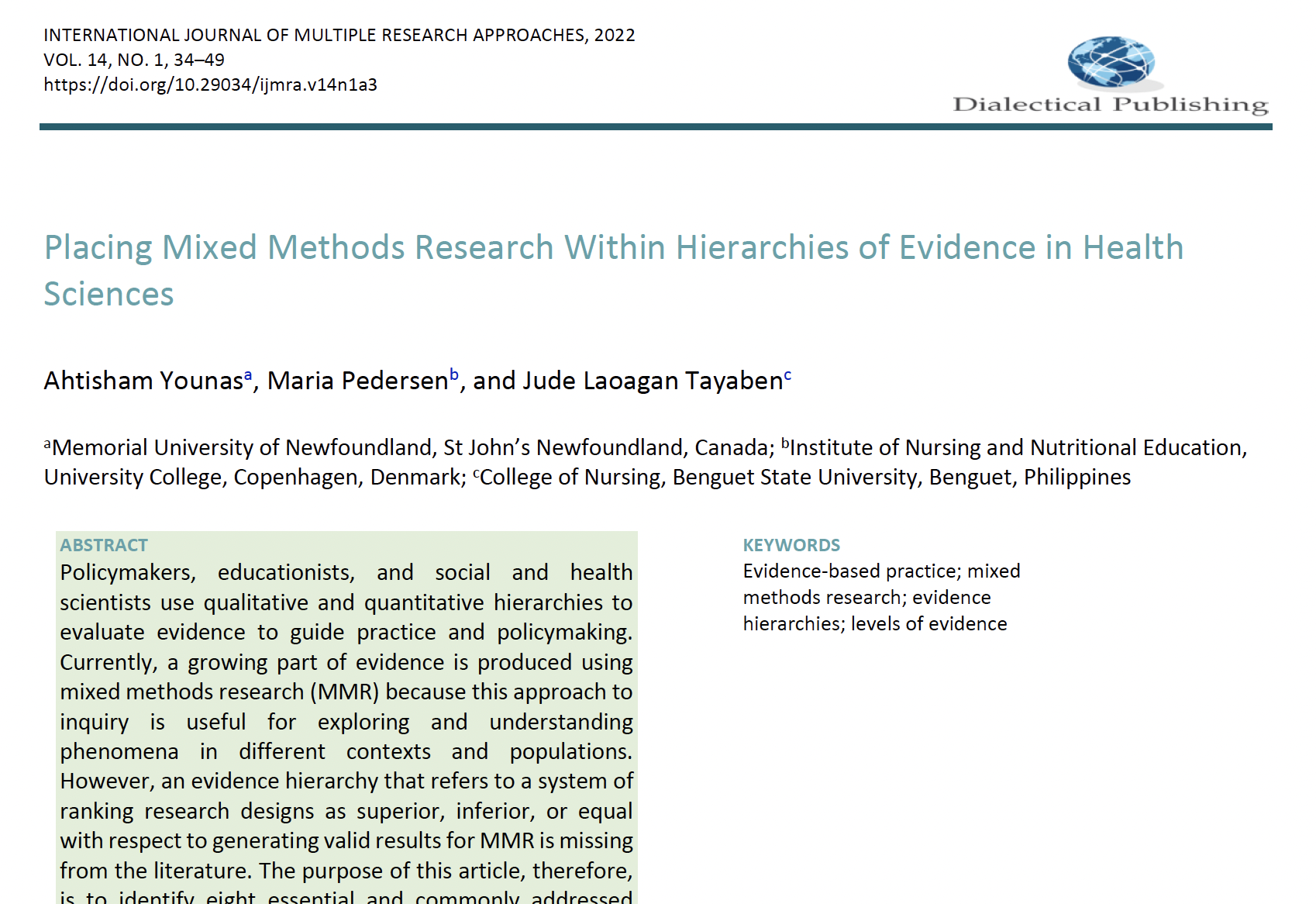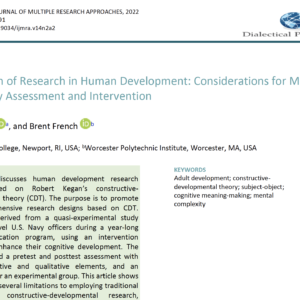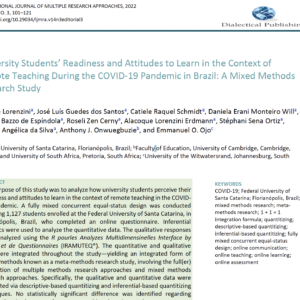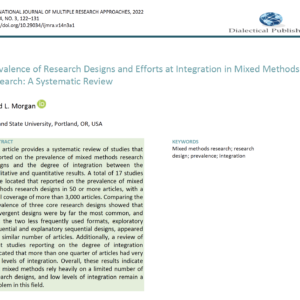14(1). 04. Placing Mixed Methods Research Within Hierarchies of Evidence in Health Sciences
$30.00
Description
Authors
Ahtisham Younas (a), Maria Pedersen (b), and Jude Laoagan Tayaben (c)
(a) Memorial University of Newfoundland, St John’s Newfoundland, Canada; (b) Institute of Nursing and Nutritional Education, University College, Copenhagen, Denmark; (c) College of Nursing, Benguet State University, Benguet, Philippines
Abstract
Policymakers, educationists, and social and health scientists use qualitative and quantitative hierarchies to evaluate evidence to guide practice and policymaking. Currently, a growing part of evidence is produced using mixed methods research (MMR) because this approach to inquiry is useful for exploring and understanding phenomena in different contexts and populations. However, an evidence hierarchy that refers to a system of ranking research designs as superior, inferior, or equal with respect to generating valid results for MMR is missing from the literature. The purpose of this article, therefore, is to identify eight essential and commonly addressed areas of MMR questions and propose a straightforward evidence hierarchy for mixed methods research in health sciences. This article also brings attention to the use and value of mixed methods for generating the highest quality evidence and extends the discussion regarding the value of mixed methods to guide practice and policymaking across various fields.




